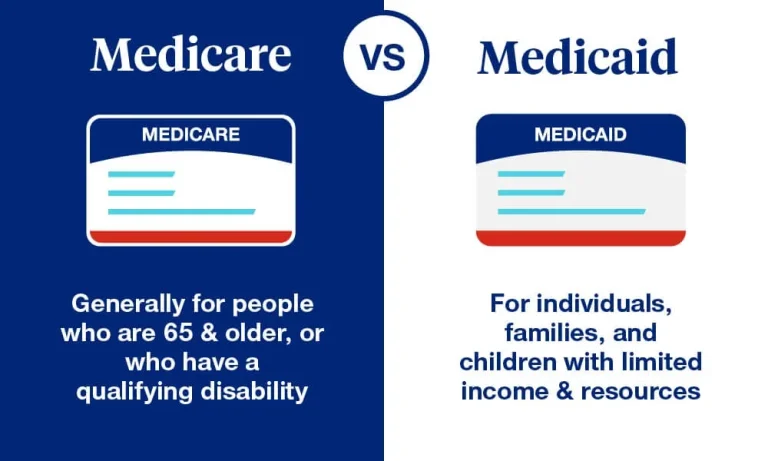Best Life Insurance for Young Families
Life insurance is an essential financial tool that can provide your family with financial security in case of the unexpected. For young families, securing the right life insurance coverage is crucial to ensure that their loved ones are financially protected. Whether you are just starting your family or have young children, the right life insurance policy can give you peace of mind and provide long-term financial stability for your dependents.
In this article, we will explore the best life insurance options for young families, highlighting different types of policies, how to choose the right coverage, and the key factors to consider when selecting a life insurance plan.
Why Life Insurance is Important for Young Families
Life insurance becomes increasingly important for families with dependents. If something were to happen to one or both parents, the surviving family members could face significant financial hardship. Life insurance helps to provide financial support in such situations, covering essential expenses such as:
- Funeral expenses
- Mortgage or rent payments
- Childcare costs
- Education expenses
- Daily living expenses
In addition to covering immediate financial obligations, life insurance can also help your family maintain their standard of living and provide funds for long-term goals like college tuition for children.
When you’re a young parent, life insurance isn’t just about protecting yourself; it’s about protecting your family and ensuring that they can continue to thrive, even without your income.
Types of Life Insurance for Young Families
There are several types of life insurance, each designed to meet different financial goals and needs. As a young family, you will need to understand the various options available to find the best fit for your situation.
1. Term Life Insurance
Term life insurance is often the best option for young families looking for affordable coverage. This type of policy provides coverage for a set period—usually 10, 20, or 30 years. During this time, your beneficiaries will receive a death benefit if you pass away. Term life insurance is straightforward, affordable, and easy to understand.
Advantages of Term Life Insurance:
- Lower premiums: Term life insurance is typically less expensive than other types of policies, making it an ideal choice for young families on a budget.
- High coverage amounts: With term life insurance, you can often get higher coverage for a lower price compared to permanent policies.
- Flexibility: You can choose a policy term that aligns with your family’s needs, such as the years until your children are independent or until your mortgage is paid off.
Considerations:
- No cash value: Unlike whole life insurance, term policies don’t accumulate any cash value. The coverage ends when the term expires, and you’ll need to renew or convert it if you still need coverage.
- Coverage ends after the term: If you outlive the term of your policy, your family will not receive a death benefit, and you may need to purchase a new policy at higher rates as you age.
For young families with limited budgets, term life insurance is often the most practical and cost-effective choice, as it provides solid protection during your most financially vulnerable years.
2. Whole Life Insurance
Whole life insurance is a type of permanent life insurance that provides lifelong coverage as long as premiums are paid. In addition to providing a death benefit, whole life policies also accumulate cash value over time, which can be borrowed against or used to pay premiums.
Advantages of Whole Life Insurance:
- Lifelong coverage: Unlike term life, whole life insurance provides coverage for your entire life, as long as premiums are paid.
- Cash value accumulation: Whole life policies build cash value, which can be accessed during your lifetime. This could be a useful resource for emergencies, loans, or retirement savings.
- Fixed premiums: Premiums for whole life insurance are typically fixed and remain the same throughout the policyholder’s life, making it easier to plan for long-term financial security.
Considerations:
- Higher premiums: Whole life insurance is more expensive than term life insurance. This can be a barrier for young families who may be on a tight budget.
- Complexity: Whole life policies are more complex than term policies, and understanding the various features and fees may require more time and research.
Whole life insurance may be a good choice for families looking for long-term financial protection and the ability to build cash value, but it may not be the best option for young families trying to minimize upfront costs.
3. Universal Life Insurance
Universal life insurance is another type of permanent life insurance that offers more flexibility than whole life insurance. It allows policyholders to adjust their premiums and death benefits within certain limits. Like whole life insurance, universal life insurance also builds cash value over time, which earns interest based on market performance.
Advantages of Universal Life Insurance:
- Flexible premiums: Universal life insurance allows you to adjust your premium payments over time. You can pay more when you have the funds or less when you’re experiencing financial difficulties.
- Flexible death benefits: You can increase or decrease your death benefit to better match your family’s changing needs.
- Cash value growth: Like whole life, universal life policies build cash value that can be borrowed or used to pay premiums.
Considerations:
- Higher premiums than term life: While universal life insurance provides more flexibility than whole life, it still comes with higher premiums compared to term life policies.
- Investment risk: The cash value in universal life insurance is tied to market performance, which means it could grow more slowly or even lose value depending on market conditions.
Universal life insurance might be suitable for families with changing financial needs, but it is more expensive and complex than term life insurance, making it less ideal for young families with limited budgets.
How to Choose the Best Life Insurance for Your Family
Choosing the best life insurance policy for your family depends on your unique needs, financial situation, and long-term goals. Here are a few factors to consider when making your decision:
1. Determine the Amount of Coverage You Need
The first step in selecting life insurance is determining how much coverage you need. Here are some factors to consider:
- Income replacement: How much income will your family need to maintain their standard of living if you were no longer around?
- Outstanding debts: Consider the amount of debt you have, such as your mortgage, car loans, and credit card balances.
- Future expenses: Think about the costs of raising children, including childcare, education, and extracurricular activities.
A general rule of thumb is to get a policy with a death benefit that’s 10-15 times your annual income. However, each family’s needs are different, so carefully assess your financial situation.
2. Choose the Right Type of Policy
As discussed earlier, there are several types of life insurance policies available. For young families, term life insurance is often the most affordable and straightforward option. However, if you’re looking for long-term coverage with the added benefit of cash value accumulation, whole life or universal life insurance might be worth considering.
3. Consider Your Budget
One of the most significant factors for young families is affordability. Term life insurance typically offers the best value, providing high coverage at a lower cost. While permanent policies like whole life and universal life offer additional benefits, they come at a higher price. Make sure to choose a policy that fits comfortably within your budget, considering both the premiums and any potential future changes in your financial situation.
4. Look for Additional Benefits
Some life insurance policies come with added benefits that could be useful for young families. For example:
- Riders: Many insurers offer additional riders that can be added to your policy, such as a child rider (providing coverage for your children) or an accelerated death benefit rider (allowing you to access a portion of the death benefit if you’re diagnosed with a terminal illness).
- Guaranteed renewal: With term life insurance, look for policies that offer guaranteed renewability. This means you can renew your policy without a medical exam, even if your health has changed.
5. Shop Around and Compare Quotes
Life insurance premiums can vary significantly between insurance providers. It’s essential to shop around and compare quotes from different companies to ensure you’re getting the best value for your coverage. Online tools, brokers, and agents can help you compare different policies and find the one that suits your family’s needs.
6. Review Your Policy Regularly
Once you’ve secured life insurance, it’s essential to review your policy regularly to ensure that it still meets your needs. As your family grows and your financial situation changes, you may need to increase your coverage or adjust your policy. Regularly reviewing your policy ensures that you always have adequate protection.
Conclusion
Life insurance is one of the most important investments you can make for your family’s future. For young families, securing the right life insurance coverage offers financial protection and peace of mind. While there are different types of policies to choose from, term life insurance is typically the most affordable and suitable option for young families who need coverage for a specific period.
By assessing your coverage needs, understanding your financial situation, and comparing policies, you can find the best life insurance plan to protect your family’s future. Remember, the earlier you secure coverage, the more affordable it is, so start thinking about life insurance today to ensure your loved ones are taken care of in case of the unexpected.






